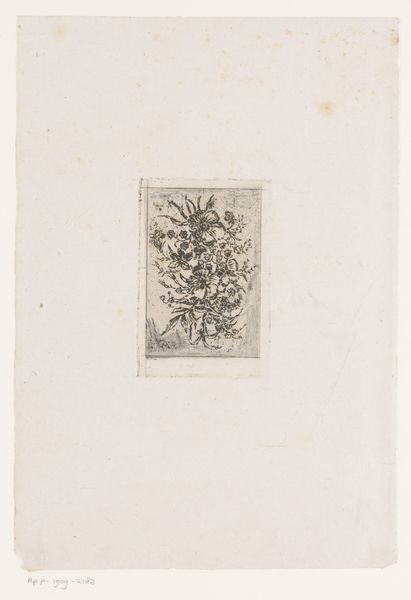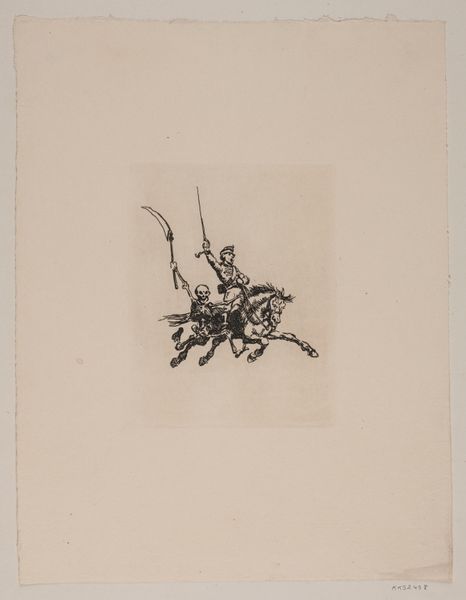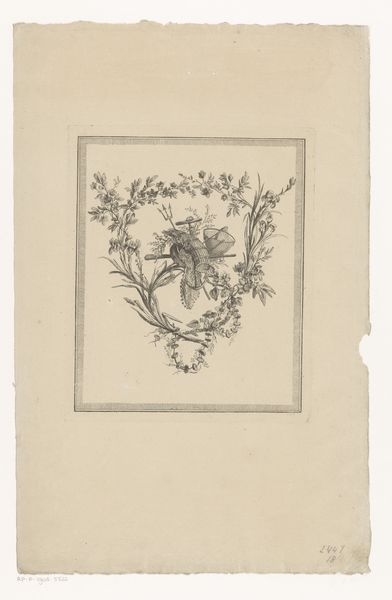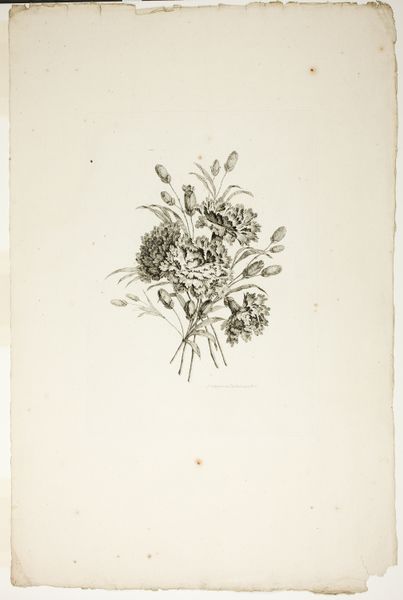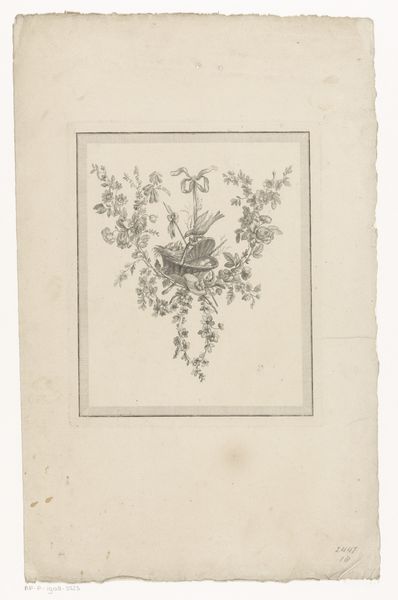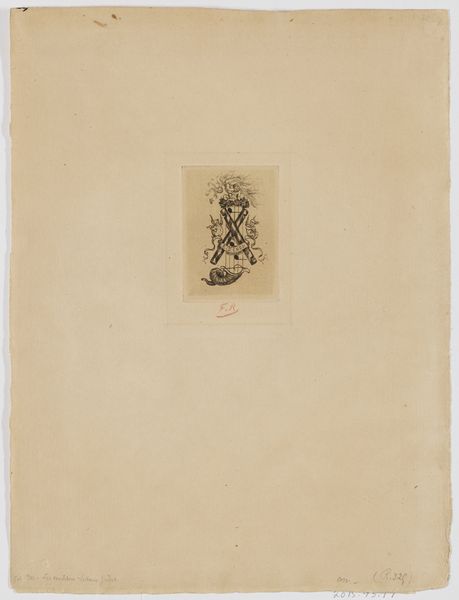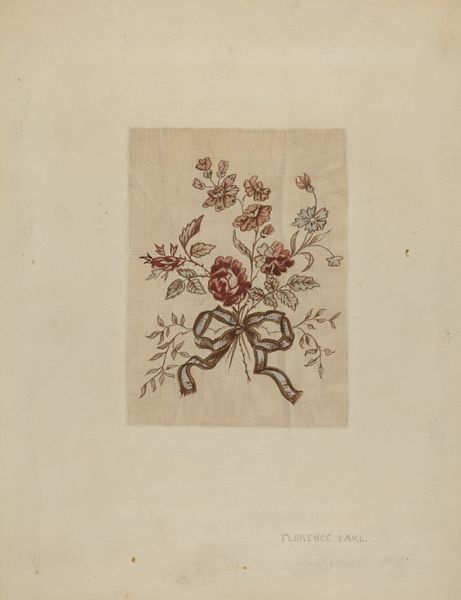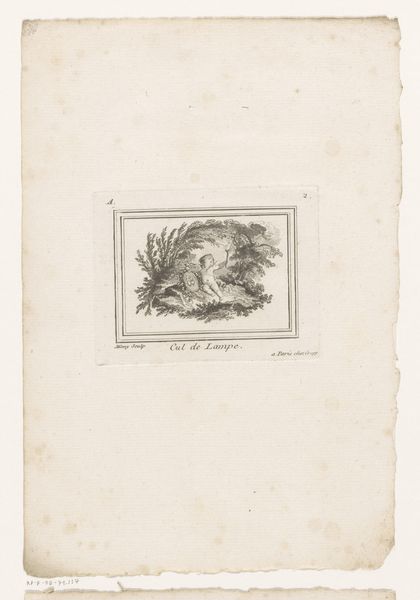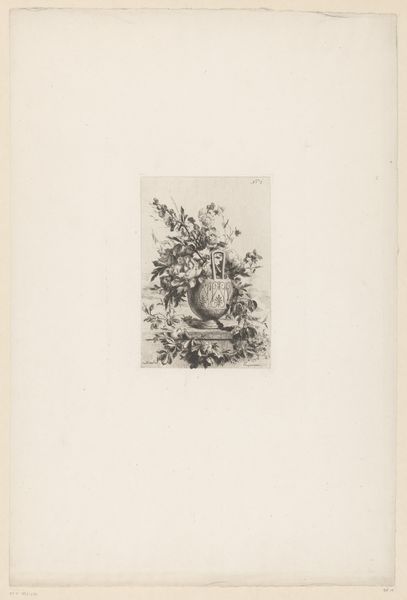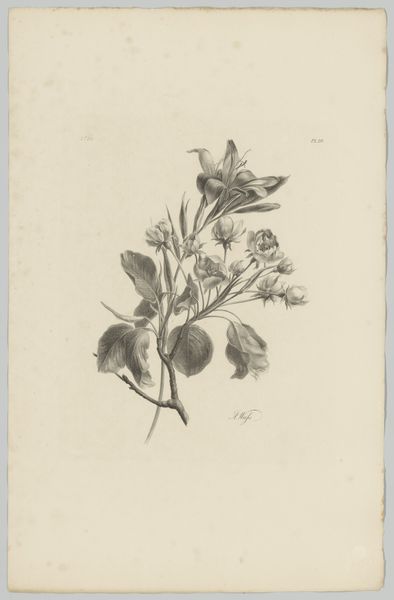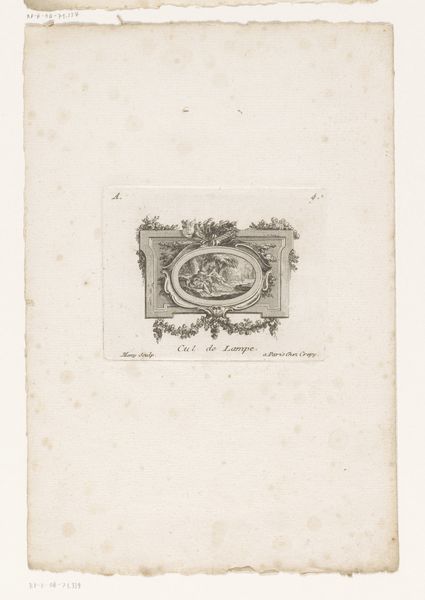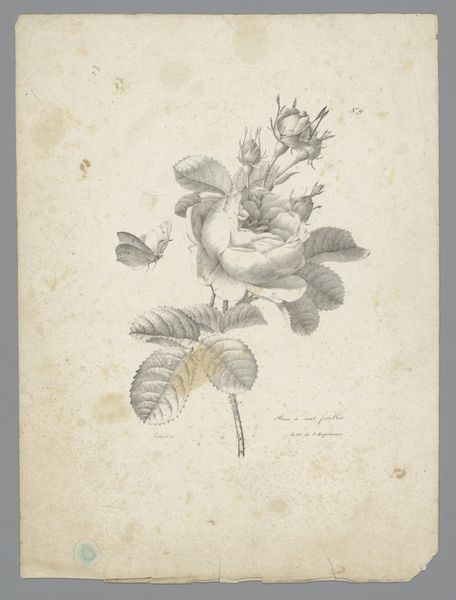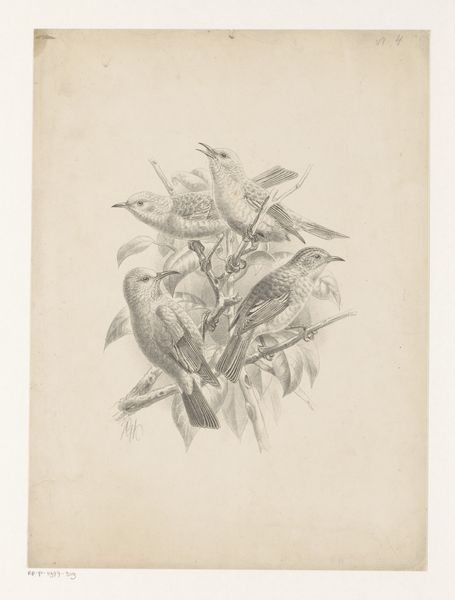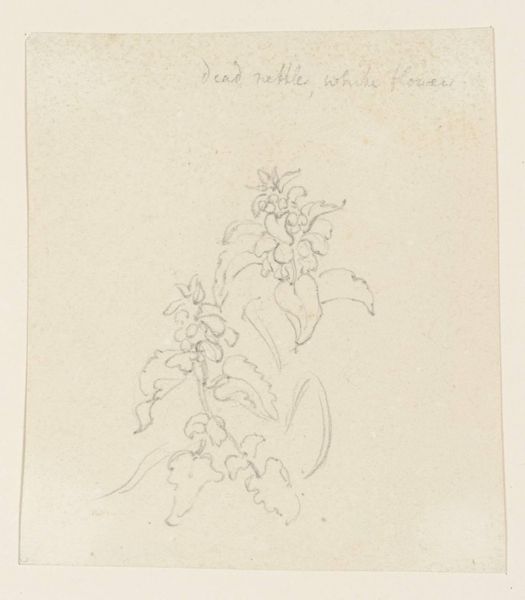
drawing, print, etching, paper, ink, engraving
#
drawing
# print
#
etching
#
paper
#
ink
#
line
#
engraving
#
realism
Dimensions: height 120 mm, width 80 mm
Copyright: Rijks Museum: Open Domain
Curator: Before us, we have Vicomte Arthur-Jean Le Bailly d'Inghuem's "Bloemstudie", circa 1870, an intimate botanical study rendered in etching. Editor: It possesses an almost melancholic fragility, doesn't it? The delicacy of the lines evokes a sense of ephemeral beauty. Curator: Indeed. Observe how the artist uses a variety of etching techniques to describe the subtle gradations of tone. The cross-hatching in the shaded areas creates depth, while the single, fine lines delineate the petals with remarkable precision. Editor: But let's consider this image within its historical context. Botanical studies, like this, often served a scientific purpose, categorizing and documenting the natural world within colonial power structures. Curator: Precisely, the meticulous rendering echoes the empirical drive of the era. Yet, simultaneously, the inherent artistic interpretation through line and composition elevates it beyond mere documentation. It's a curated view of nature. Editor: Yes, and consider what is selected to be visually prioritized here, lilies are traditionally symbols of death or associated with the Virgin Mary, what does their visual precedence mean for how the viewer perceives this composition? What feelings about the subject matter are subconsciously enforced or eschewed when viewing this floral illustration? Curator: Intriguing. This interplay between observation and imposed meaning underscores the complexity inherent in realism. The etching process itself introduces layers of artistic interpretation, a mechanical reproduction imbued with individual expression. Editor: Furthermore, one can examine the socio-political context surrounding the production of prints and drawings. This piece becomes embedded in an economy of access and consumption. To whom was such knowledge meant to be distributed? What are the implications of these prints for understanding class, labor, and gender? Curator: Absolutely, and such questioning expands our understanding. By attending to the artwork’s inherent qualities and material circumstances, we gain a deeper appreciation for the artist's achievement. Editor: Precisely, understanding the intersection between art, nature, and history broadens the conversation about the complex forces involved in creating an image like "Bloemstudie".
Comments
No comments
Be the first to comment and join the conversation on the ultimate creative platform.
